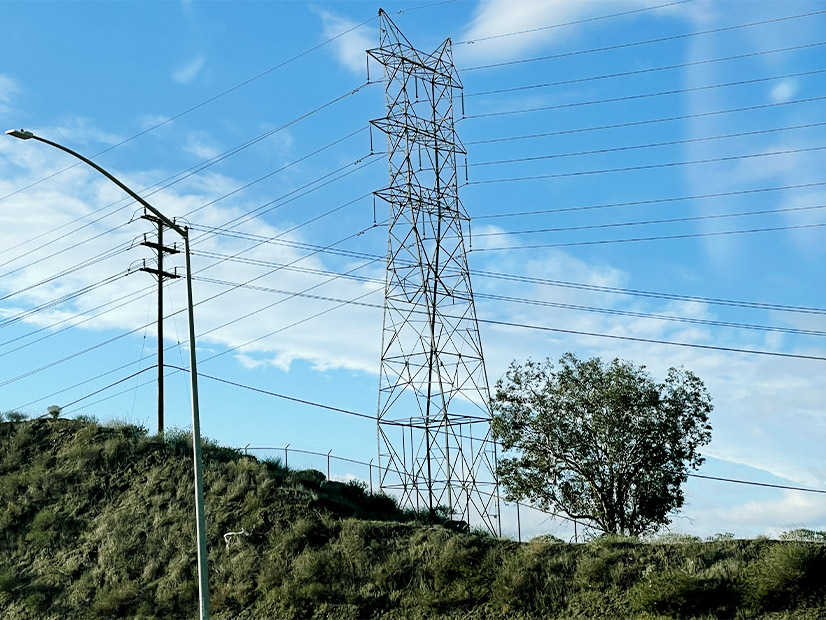A bill introduced by House Democrats would grant FERC numerous new authorities over interregional transmission in a bid to spur large projects and increase the flow of renewable energy across state lines.
A bill introduced in the U.S. House of Representatives by Democrats on Dec. 13 would grant FERC numerous new authorities over interregional transmission in a bid to spur large projects and increase the flow of renewable energy across state lines.
The 210-page Clean Electricity and Transmission Acceleration (CETA) Act, introduced by Reps. Sean Casten (D-Ill.) and Mike Levin (D-Calif.), would add six new sections to the Federal Power Act, many of them directing FERC to issue new regulations for how it can site new interregional projects. Most significantly, it would require the commission to solicit plans from grid operators and other transmission providers identifying interregional transmission projects every three years.
The bill details the criteria for how FERC would evaluate the plans and the projects they identify. The commission would be required to issue its solicitation within a year and a half of the bill’s enactment.
FERC also would gain explicit siting authority over interstate transmission lines with capacities over 1 GW, if the commission finds they enable the use of renewable energy, increase reliability and reduce congestion, among other provisions.
The bill also would set new cost allocation rules for any transmission facility “of national significance,” defined as a new line that has a capacity of 1 GW or more; any transmission connecting offshore generators; and upgrades that increase an existing line’s capacity by 500 MW or more. Costs would be allocated “to customers within the applicable transmission planning region or regions in a manner that is roughly commensurate with the reasonably anticipated transmission benefits,” the bill says.
Many of these projects would qualify for a 30% investment tax credit established by the bill. To carry out all its new responsibilities, FERC would be allowed to establish a new Office of Transmission.
“The biggest challenge facing the United States’ ability to meet its climate goals is the lack of capacity of our electrical grid to connect clean energy generation to the new demand that comes with economy-wide electrification,” the House Sustainable Energy and Environment Coalition (SEEC), made up of 93 Democrats, said in a press release. “CETA aims to inclusively and efficiently support the buildout of transmission lines to transport the electricity from its generation source to the homes of the American people.”
The release included statements of support from former FERC Chair Richard Glick, Grid Strategies’ Rob Gramlich, Americans for a Clean Energy Grid, the American Clean Power Association and several environmental organizations.
“The CETA Act is an important step in addressing some of the most pressing issues around transmission capacity and the diverse technologies that can deliver solutions at speed and scale,” AES said in a statement. “We commend the efforts of the SEEC caucus on this thoughtful bill, which aims to reduce bottlenecks and improve planning of and connection to the transmission system.”
The bill also would incentivize development of solar, wind and geothermal resources on public lands and establish a production goal for such resources of at least 60 GW by the end of 2030. It would direct the Department of Agriculture, in consultation with the Department of Energy, to identify priority areas for solar and wind.
Finally, CETA would codify President Joe Biden’s goals for offshore wind deployment, directing the Department of the Interior to issue permits for a cumulative of 30 GW by 2030 and 50 GW by 2035. It also would establish an Offshore Renewable Energy Compensation Fund in the Bureau of Ocean Energy Management “to compensate eligible ocean users for damages experienced as a result of the development of an offshore renewable energy project through a claims-based process and to provide grants to eligible recipients to mitigate future damages from such projects.”
With Republicans in control of the House, the bill has virtually no chance of passing as drafted. And the increased authority it would grant to FERC is likely to draw some opposition from states both red and blue, along with their utilities.
The permitting reform debate has been on apparent hiatus for months, as the House battled over the speaker position and the debt ceiling. Several bills have been introduced in both houses, but none has been viewed as a starting point for party negotiations. The last hearing by the Senate Energy and Natural Resources Committee on the subject was held in July. (See Members of Congress Debate Transmission Permitting.)


